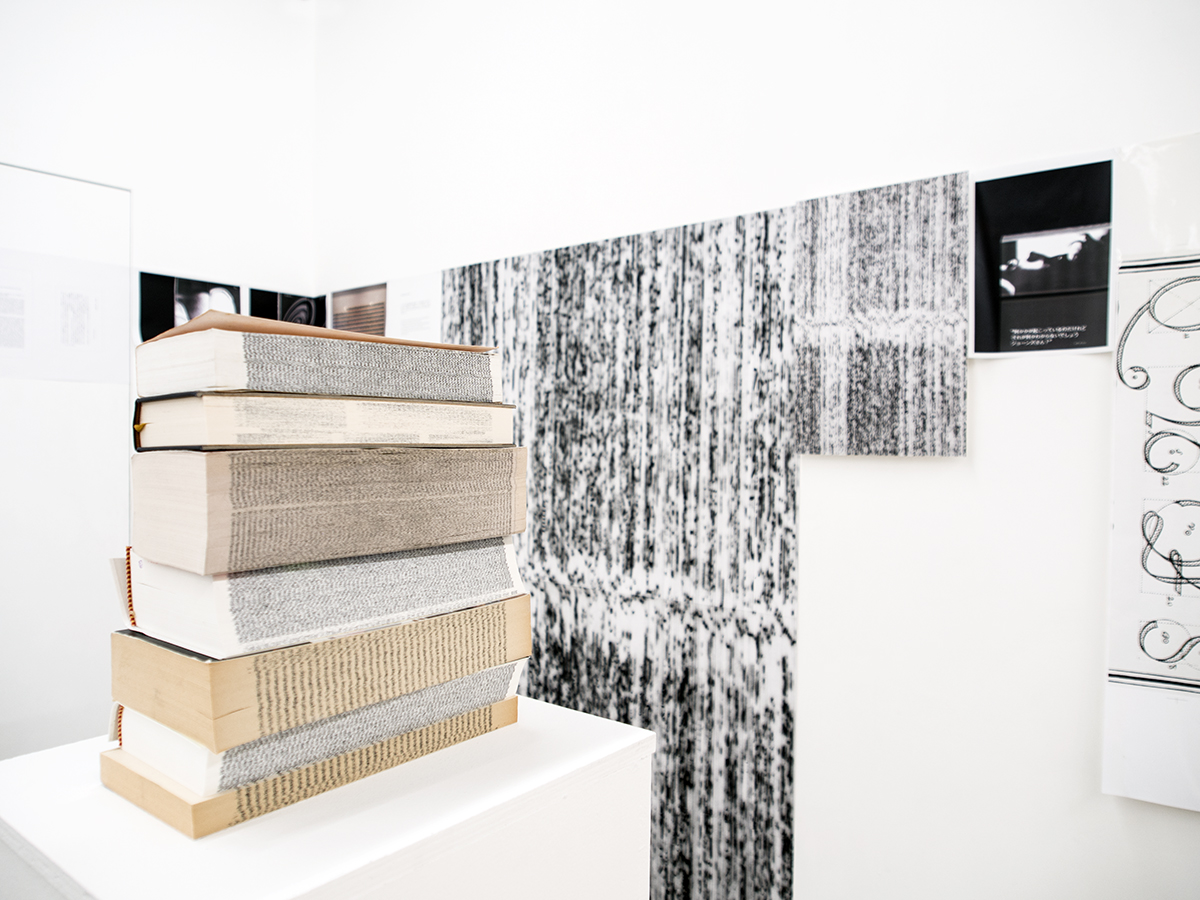NEWS

- 2018.03.18
- intext "DEATH OF FUNCTIONS" ART BASEL HONG KONG 2018
Graphic designers Yusuke Mimasu, Hiroshi Toyama and programmer Takehisa Mashimo form intext, reconsidering the present state of text, image and sound media communications, instead giving rise to a universal message in relation to language and culture. Their usual day jobs concerning graphic design or programming requires the mediation of adequate information for humans and computers respectively, but their focal interests lie not in the contents of the mediated information, but rather in the message or experience contained within text, image and sound themselves that help transmit the information. On the one hand, intext’s works obscure the content of books and displays through their own process, while on the other, a hidden universal message in relation to language, culture and communication is brought to the fore from the remaining faint traces of content.
A UNIVERSALITY
THAT RESIDES WITHIN FORM
The focal piece, “dimensional wall”, examines dictionaries from around the world, photographing and enlarging their cross-sections. At first, the work seems to observe a dimensional difference in text. A general characteristics of language itself can be sensed instinctively through the impression of forms and rhythms of each language informed by their cross-sections. The dictionaries used are from the various countries traversed by the artists, and one is able to experience the differences of each language; Japanese, Korean, English, German and Arabic. We are all aware of the differences in letters, grammar and pronunciation between different languages. However, the work allows a more primitive difference to come through in the spacing of the letters, page lines and spaces, where the character of a language can be perceived. Similarly, in their representative work “reading method”, a computer reads out one page of “The Tower of Babel”, which explains why the world’s peoples speak different languages. The computer does not read from the top of the sentence as humans would, but it traverses the page horizontally, or reads backwards, or it reads out all the letters on any given line at once. Comprehension is not required of them in order to carry out the simple rule of reading. However, as it proceeds with a process similar to scanning, the differences from one language to another emerges as instinctive aural experience, through the way the letters are stacked horizontally as well as vertically, the arrangement of vowels and consonants, and the positioning of blanks through to the noise where sounds are layered on top of one another. The prose in books are ultimately designed for our ease of use. However, the sounds that emanate from “reading method” show the extent to which attention to design is inherent to language and culture, proposing a completely different viewpoint of the reading experience.
DEATH OF FUNCTIONS
The exhibition title, ”DEATH OF FUNCTIONS”, is an anti-thesis of the type of work the members of intext usually encounter; the “adequate communication of information”. Information today deals much less with materiality, and much more with the larger concept of “consumption”. The life-span of information communicated between individuals is short-lived and insignificant. As the recent buzzword of “post-truth” reveals, the quality of information today cannot be assured, and its value lies in the pleasure of information reception, spreading around society as a whole. In this present context, intext’s works counteract the function of media and content communication, revealing a more universal message and thereby pressing us to reconsider the core implications of the communication we see, read, hear and touch. This is a problem in contemporary society where information reception is concerned, and at the same time, it is a recurring theme in the arts; the problems surrounding the reception of artworks is a theme that deeply underpins aesthetics (studies in sensibility).This is hence a proposal for a new viewpoint within both art and society.
